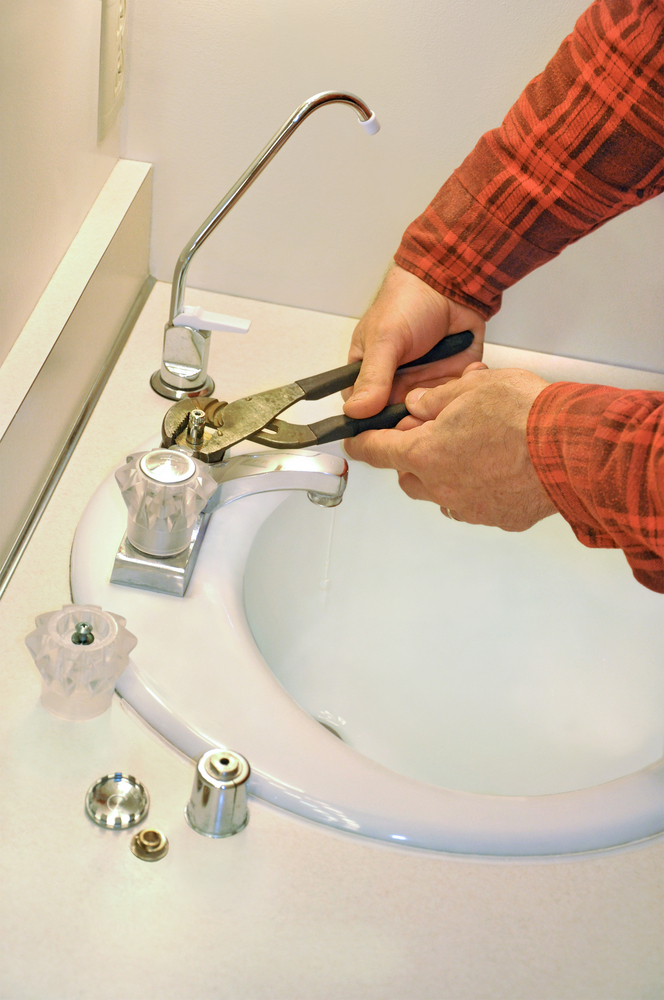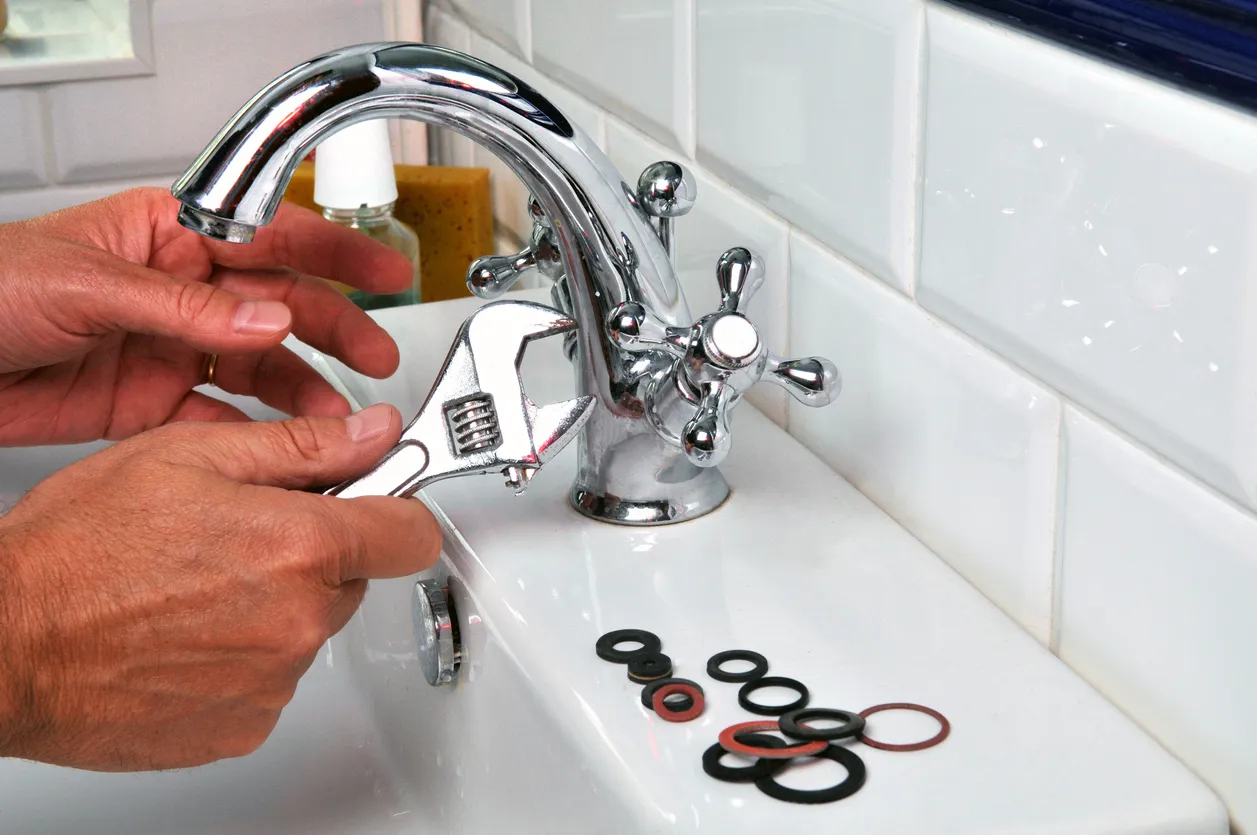Each person seems to have their unique piece of advice when it comes to Should I Repair or Replace a Leaky Faucet?.

Leaking taps may seem like a minor trouble, however their effect surpasses just the nuisance of the noise. From wasting water to incurring unneeded monetary costs and wellness risks, disregarding a dripping faucet can result in various consequences. In this short article, we'll delve into why it's essential to address this typical home issue promptly and effectively.
Wastefulness of Water
Ecological Impact
Trickling taps add substantially to water waste. According to the Epa (EPA), a solitary faucet trickling at one drip per second can waste greater than 3,000 gallons of water annually. This not only stress water resources however also influences communities and wild animals depending on them.
Step-by-Step Guide to Dealing With a Dripping Faucet
Devices Required
Before trying to fix a leaking faucet, collect the necessary tools, including an adjustable wrench, screwdrivers, substitute components (such as washers or cartridges), and plumber's tape.
Typical Tap Issues and Their Solutions
Recognize the type of faucet and the certain concern causing the drip. Common issues include damaged washing machines, rusty shutoff seats, or damaged O-rings. Refer to supplier instructions or online tutorials for step-by-step guidance on fixings.
Financial Expenses
Raised Water Bills
Beyond the environmental influence, leaking taps can pump up water expenses significantly. The collected wastage in time equates into greater utility expenditures, which can have been avoided with prompt fixings.
Prospective Residential Or Commercial Property Damages
Additionally, prolonged dripping can lead to damage to components and surface areas surrounding the faucet. Water accumulation can cause staining, corrosion, and even structural problems if left neglected, leading to extra repair work costs.
Health and wellness Issues
Mold and Mildew Growth
The continuous existence of moisture from a leaking tap creates a perfect environment for mold and mold growth. These fungi not just endanger indoor air high quality yet additionally present wellness risks, especially for people with respiratory system conditions or allergic reactions.
Waterborne Conditions
Stationary water in trickling taps can become a breeding ground for bacteria and other pathogens, boosting the danger of waterborne illness. Pollutants such as Legionella germs flourish in stagnant water, possibly bring about major illnesses when consumed or breathed in.
DIY vs. Professional Repair
Pros and Cons of Do It Yourself Repair Service
While some might attempt to deal with a leaking faucet themselves, do it yourself repair work come with their very own set of challenges. Without correct understanding and devices, DIY attempts can aggravate the problem or bring about incomplete fixings, extending the trouble.
Benefits of Employing a Specialist Plumber
Employing a specialist plumber guarantees that the underlying source of the dripping faucet is attended to effectively. Plumbings have the knowledge and equipment to diagnose and repair faucet problems successfully, conserving time and decreasing the threat of further damages.
Environmental Obligation
Private Contribution to Conservation
Taking obligation for repairing leaking faucets aligns with broader efforts towards water preservation and ecological sustainability. Every individual's actions jointly make a substantial effect on protecting priceless resources.
Sustainable Living Practices
By focusing on punctual fixings and taking on water-saving routines, individuals add to lasting living practices that profit both present and future generations.
Safety nets
Routine Upkeep Tips
To avoid trickling faucets, execute routine upkeep such as cleaning aerators, evaluating for leaks, and changing damaged parts without delay. Furthermore, consider setting up water-saving gadgets or updating to a lot more reliable fixtures.
Significance of Prompt Fixes
Dealing with dripping faucets as soon as they're seen prevents additional water waste and potential damages, inevitably conserving both water and cash in the future.
Effect On Building Worth
Assumption of Well-Maintained Residential Property
Maintaining a residential or commercial property in good condition, including addressing upkeep issues like trickling taps, enhances its regarded value and worth among potential purchasers or tenants.
Impact on Resale Value
Features with well-kept plumbing components, including taps, command greater resale values in the realty market. Attending to trickling faucets can contribute to a favorable impression throughout home inspections and arrangements.
Conclusion
Attending to a dripping faucet surpasses mere convenience; it's a necessary action toward saving water, lowering financial expenses, and guarding health and home. Whether via do it yourself repairs or professional support, acting to take care of trickling taps is a tiny yet impactful means to advertise liable stewardship of sources and contribute to a healthier, much more sustainable future.
Why Are My Faucets Dripping (And Can I Fix it Myself)?
Causes of a Dripping or Leaking Faucet
Whether you’re hearing drops of water falling and hitting a sink, or noticing water ooze out from the base of the spout, you shouldn’t ignore a dripping or leaking faucet. And, the good news is, sometimes you can fix the problem yourself.
In this article, we’ll review a few common causes of dripping and leaky. We’ll also walk you through some basic ways to find the problem and handle it without calling anyone — and let you know when to call in a pro.
But, no matter what the cause, or whether you can handle it on your own, the sooner you address it, the better.
Each drip may be a tiny amount of water. But, they all add up quickly. According to the U.S. Geological Survey, one faucet losing one drop every 20 seconds — five a minute — wastes around a liter of water every day, and 173 gallons a year.
Add in more than one in your house, and it’s a lot of water to waste. So, we’ll help you get to the bottom of things quickly.
Four Reasons Your Faucet May Be Dripping
Aerator is Damaged or Unseated Valve Seat is Corroded O Ring is Loose or Worn Out Part of the Assembly is Loose Aerator is Damaged or Unseated
If you unscrew the end of your faucet, you’ll find the aerator. It’s the little stem piece with a screen on it that shuts off the water circulation.
If it’s damaged, or if it’s not sitting right, it will allow water to pass through.
Valve Seat is Corroded
Next is the valve seat, which is connected to the washer. If the washer wasn’t in place correctly, then it could have ground against the seat. Over time, this damages the valve seat.
The problem could also be corrosion: Over time, the part has worn out, and it’s now allowing water to pass through.
O Ring is Loose or Worn Out
Since the o ring is only a small rubber gasket, it’s a common reason why the faucet is dripping. You’ll find it at the base of the faucet, and it’s there to keep water from coming out where it’s not supposed to.
However, it’s common for the o ring to wear out over time. When it does, you’ll notice a drip.
Part of the Assembly is Loose
So far, we’ve looked at a few small, specific parts. But, the problem could be anywhere in the assembly if something’s out of place.
Even if a part isn’t damaged, over time, it may have become loose or dislodged. It could be the parts we mentioned, or the aerator at the tip of the faucet, the stem itself,
Can I Fix a Leaky Faucet Myself?
Depending on the problem, and how handy you are, there’s a chance you can fix a leaky faucet without calling a professional. But, you do run the risk of making the problem worse.
If it’s a small drip, you can certainly try a few troubleshooting tactics. We’ll walk you through them in a moment.
But, no matter what, your first step should be shutting off the water coming into the faucet. You should find a shutoff valve under the sink on the pipes leading to it. Turn each one clockwise until they close tightly.
Next, make sure you have the right tools for whatever you’re attempting. It’s tempting to make do with what you have. But, you need the right ones for a reason: You’re often dealing with small parts that can break if you handle them carelessly.
If you’re feeling confident, here are some places to start.
Items Near the Tip of the Faucet
A few of the parts we mentioned — particularly the valve seat and washer — are located at the tip of the faucet where the water comes out. They’re easy to access, making it a good place to start.
Check the O Ring
To check the o ring, you’ll need to take off the spout at the base. It’s easiest on kitchen sinks with long spouts, versus the smaller, bulkier base on most bathroom sinks.
Either way, this can be tricky, so do it carefully and don’t force anything. If it’s not coming right off, you’re much better off calling in a pro than possibly breaking something.
For a kitchen sink, there’s usually a nut or coupling assembly at the base of the spout. These often slide off easily without using any tools.
Once you’ve disassembled those parts, gently but forcefully twist off the spout.
Then, you can see the o rings. There should be two of the rubber gaskets on the base. If they look worn or damaged, replace them, and see if that solves the problem.

I recently found that post on Why Is It Important To Fix Your Leaking Tap/Faucet? while surfing the internet. Do you know about somebody else who is occupied with the subject? Feel free to share it. We truly appreciate reading our article about Why It's Important to Fix Leaky Faucets.